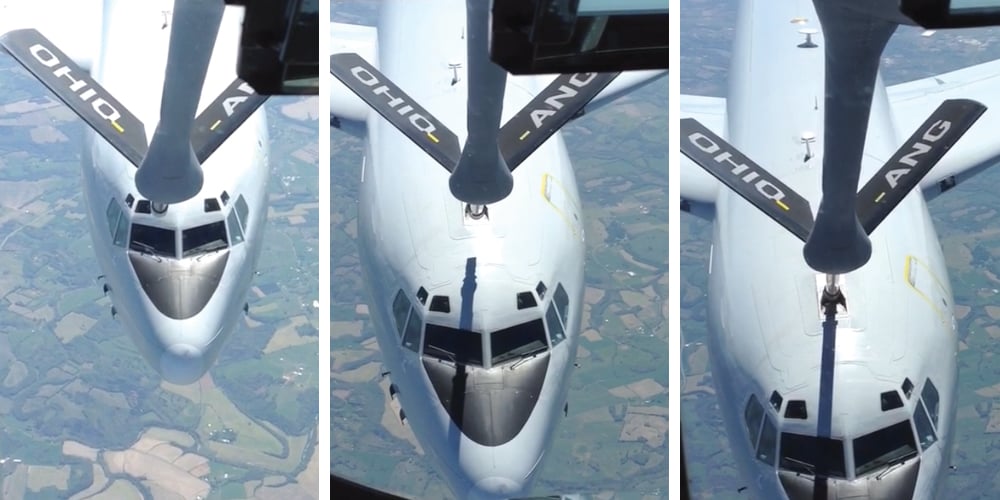Teamwork. One of life’s earliest lessons. If you have siblings, you probably learned teamwork at home when you picked up your toys or had chores. As an identical twin, I learned teamwork early in life. My twin and I figured out that if we worked together, we could complete the task faster and get back to our cartoons.
As you progressed through high school, college and your first grown-up job, you probably gained more experience with teamwork in sports, as part of a study group, or on a committee at work.
With all the teamwork experience I had over the years, I thought I had a good grasp on what it meant to be a good team player. You do your best, pull your weight, meet the deadlines, and be respectful of your teammates. That’s what I thought.
Until April 23, 2015.
What. A. Day.
One of the copywriters at my company is in the Navy Reserves. I received an invitation to join 20 other Ohio business owners to take part in an event called a Boss Lift, hosted by ESGR - Employer Support of the Guard and Reserve. ESGR (a division of the Department of Defense) offers opportunities like this for business owners that employ service members from the Guard or Reserve to see first-hand what their employees do on “drill” weekend duty or when called to active duty.
We met at Rickenbacker Air Force Base on an early spring morning. We boarded a KC-135 Stratotanker (a military aerial refueling aircraft) to participate in a mid-air refueling exercise. No pretzels or diet Coke served on this baby! The KC-135 holds excess fuel in what would normally be the baggage compartment on a Boeing 707 airplane. The mission was to fuel another aircraft (a C-17) mid-air as it flew behind and beneath the KC-135. It was an actual training mission that day.
Did I mention … it was a great day?
Located in the tail cone of the plane is the “Boom” Guy (not his official military rank, but that’s what he’s called.) The Boom Guy is responsible for safely and effectively transferring fuel from one military aircraft to another during flight. He lies on his belly with his chin on a padded chin rest and looks out a “windshield” from the back of the plane while controlling a joystick-like device to guide the fuel line into the receiving aircraft. (See photos above ... taken by yours truly – lying on my belly in the tail cone right next to the Boom Guy.)
The pilot of the KC-135 and the Boom Guy only have verbal communication. The pilot cannot visually see anything that’s happening behind that 100,000 pounds of flying metal. Personally, I found this fascinating, since my Toyota Camry does indeed have a camera so I can see what’s happening behind my 3,500 pounds of metal. The multimillion-dollar aircraft didn’t have the luxury of a backup camera. The pilot and the Boom Guy are communicating verbally while the Boom Guy is aligning the fuel line into the C-17.
The Boom Guy and the C-17 pilot have no verbal communication. It’s all light signals (at night) and hand signals (during the day). This team of three people with two military aircraft, one fuel line, and years of individual training and expertise executed their jobs with exact precision.
Talk about teamwork.
I’ve often reflected on that experience, and I think about my role on a team. Whether it’s at my company, with a client, on our HOA Board of Directors, or even when working on family tasks (we recently helped my parents relocate from southern California to Atlanta), teamwork is evident in my daily life, both personally and professionally.
Teamwork Requires Trust.
The Boom Guy managed the fuel line, the C-17 pilot managed his flight pattern, while the Stratotanker pilot managed his aircraft. They all had to trust that the other person knew and was doing his job. That’s a lot of trust. I think about my performance on a team. Do my teammates trust me? Do they feel comfortable that I know what to do and when to do it? Sometimes, on rare occasion, every once in a while, I’ve been told that I’m too controlling. If I really think about that … I know it’s true. And I have to admit it’s because I don’t trust someone to do the job. I’m a “work in progress” on that particular issue. Most times, the other person is very capable and skilled to do the job. That’s when I have to remind myself to trust the person to do that job. I’m definitely more mindful of how I interact on a team when it comes to trust.
Teamwork Requires Communication.
Speaking. Listening. Understanding. Questioning. I saw all of these skills that day, and it made me realize how critical communication is on a team. Especially when some team members don’t see what you see. That happens often. But for the team to function efficiently, good communication skills need to be present. You’re there to do your job. But are you as laser-focused on communication as you could or should be? If someone isn’t performing on the team, do you give honest feedback? When someone gives you honest feedback, do you accept it? Is the whole team on the same page with objectives and goals? Consider your role on your team and how you might communicate better to improve the overall performance.
Teamwork Requires Responsibility.
You have to show up. It’s that simple. You have to commit to doing your job. If I fail as a team member, I may miss a deadline or not complete my task as thoroughly as I could. But at 30,000 feet, “showing up” had a whole new meaning. All of the teammates on this plane came that day with their finely tuned skills ready to contribute to the day’s activities. I think about my team participation. Do I always deliver? Mostly yes, sometimes no. I’ve missed deadlines. I’ve overlooked tasks. I’ve made mistakes. It happens. Nobody is perfect. But if you make a mistake, own it and move forward.
Teamwork is critical in completing any mission. Whether it’s 30,000 feet in the air or in a conference room, the team must work together to accomplish the objective that they were enlisted to do. Sometimes all team members don’t have all the viewpoints of each specific team member, but a task is complete and successful only when the entire team understands the goal.
Teamwork ... one of life’s earliest lessons. And a lesson we spend a lifetime learning.
For more information about Jayni or how her company might help your credit union, visit their website at www.marketingsolutionsunltd.com or email her directly at Jayni@marketingsolutionsunltd.com.







